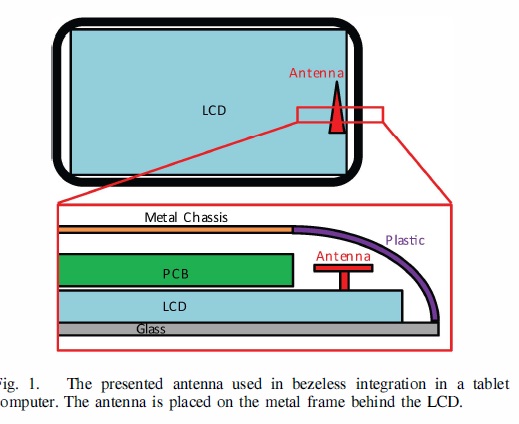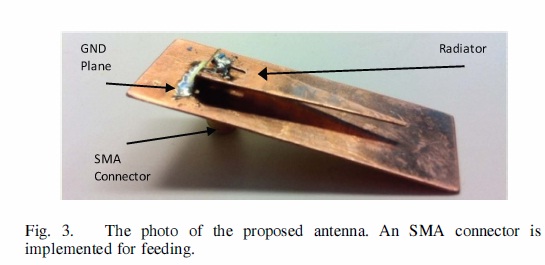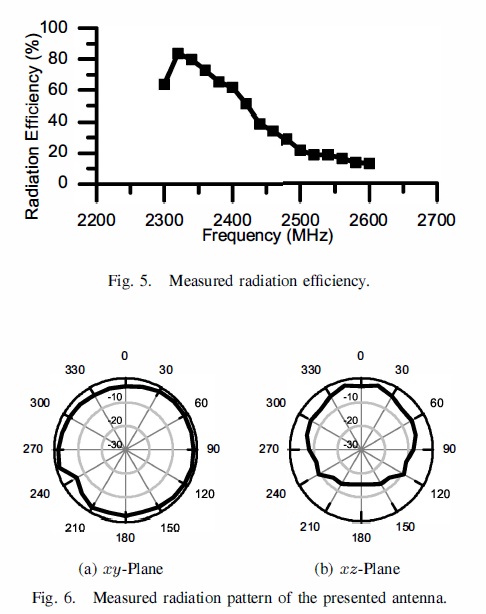





Published on Mar 01, 2025
A novel antenna for wireless local-area-network (WLAN) applications is presented to enable bezeless antennaintegration to ultra-thin tablet computers. Unlike conventional antennas that require wide plastic-bezels, this 37.5x10-mm2 antenna sits on the LCD metal frame with a gap of only 3.5 mm. Even with such small gap, excellent RF performance is demonstrated. The efficiency is as high as 83% and the bandwidth is about 100 MHz at 2.4 GHz. This antenna concept may eliminate the long-hated plastic-bezel around the LCD display and improve industriaVmechanical designs of tablet computers.
As thickness of mobile devices is being reduced and the liquid-crystal display (LCD) is getting larger, the antenna has become one of the critical concerns in mobile-device designs. Conventional antennas require not only sufficient metalclearance but also multiple antenna-windows to maintain RF performance [1]-[6]. This significantly hinders the advance of industrial design (ID) and mechanical design of the mobile devices. Consequently, wide and ugly plastic-bezels around the LCD are unavoidable for existing tablet-computers.

Typically variations of inverted-F or monopole antenna are employed in tablet computers [1]-[S]. These antenna designs require metal-free antenna windows both above and below the radiator. Otherwise, the antenna may suffer from low radiation-efficiency, low bandwidth, high return-loss, and detuning. Because the LCD display has high metal-content and is backed by a metal frame for mechanical support, the antenna cannot overlap with the LCD in a tablet computer. A wide plastic bezel around the LCD is widely-adopted for antenna attachment and to obtain enough separation from the LCD. In this paper, a novel antenna supporting wireless local area network (WLAN) is presented to eliminate the bezel in ultrathin tablet computers.
This antenna is designed to sit on the LCD metal frame instead of the plastic bezel as shown in Fig. 1. Antenna windows on the LCD metal frame are not required and the impact to system thickness is negligible. Even with only 3. S-mm separation from the metal frame, the antenna still exhibits excellent RF performance such as high efficiency and sufficient band-coverage. It can be high-volume manufactured using metal stamping with very low cost. This antenna design and the elimination of the bezel provide significant flexibility for ID designers and mechanical engineers to design more attractive and stronger tablet computers. It may eventually accelerate the evolution of mobile-devices.
The antenna design is shown in Fig. 2. It consists of a triangular radiator and a rectangular ground plane. Both parts are made of copper sheet. The radiator is bent by 90° at the left end and is soldered to the ground plane. In a tablet computer, this ground plane is to be attached to the LCD metal frame using conductive adhesive. The antenna design is simulated and tuned using ANSYS HFSS [7]. In this particular design to support WLAN, the triangular radiator is 37.S-mm long and lO-mm wide. The gap between between these two metal parts is 3. S mm and is filled with air.

The bandwidth is a function of radiator width and gap. The resonant frequency is mainly determined by the distance from the feed to the tip of the radiator. The feed is 4.5-mm away from the left edge of the radiator. It is implemented using an SMA connector in this work, but can also be implemented by soldering microcoax cable in tablet computers. The input impedance can be adjusted by moving the feed along the length-side of the antenna.
The antenna prototype is fabricated using copper sheet as shown in Fig. 3. An SMA connector is inserted through the ground plane from the bottom side of the antenna for feeding. The simulated and measured return loss is shown in Fig. 4. Very good agreement is achieved between simulations and measurements. The return loss is lower than -25 dB. The 10- dB bandwidth is about 100 MHz and is sufficient for WLAN applications. The resonant frequency is slightly shifted due to the fabrication tolerance. The measured radiation efficiency is shown in Fig. 5. Even with the metal plane as close as 3.5 mm, the antenna still has fairly high radiation-efficiency. The measured efficiency ranges from 62-83% within a 100-MHz bandwidth.

The radiation pattern is shown in Fig. 6. On the xy-plane, the radiation pattern is nearly isotropic.A small dip is found around 2400 and is due to the cable connection during testing. As expected, because the ground plane partially obstructs the radiation downwards, the radiation pattern is not perfectly isotropic on xz-plane. However, the measured antenna gain is only 5-10- dB lower than the top hemisphere. It is demonstrated that the radiation characteristics of the presented antenna are beyond the requirements of WLAN applications in a bezeless tablet.
An innovative antenna that can be integrated with the LCD metal frame to realize bezeless ultra-thin tablet-computers is demonstrated. Even with a GND plane as close as 3.5 mm, this antenna shows excellent RF performance such as high efficiency, low return-loss, and good bandwidth, to meet the requirements of WLAN applications. This antenna concept may be employed to alleviate the burden caused by conventional antenna-integration and leads to tablet computers with more attractive ID/mechanical features.
[I] Z. Zhang, "Antenna Design for Mobile Devices", First Edition, John Wiley & Sons (Asia) Pte Ltd., 2011
[2] S. -H. Hsieh, D. -L. Huang, F. -So Chen, C. -F. Yang, Y. -CO Chen, and Y. -Y. Chan, "A Compact Inverted-F Antenna for Dual-Band WLAN Operations in a Mini Tablet Computer", IEEE Asia-Pacific Conference on Antennas and Propagation, August 27-29, 2012, Singapore
[3] K. -L. Wong and T. -w. Weng, "Small-Size Triple-Wideband LTEfWWAN Tablet Device Antenna", IEEE Antennas and Wireless Propagation Letters, vol. 12, pp. 1516-1519,2013
[4] J. -H. Lu and F. -CO Tsai, " Planar Internal LTElWWAN Monopole Antenna for Tablet Computer Applicatoin", IEEE Trans. on Ant. and Prop., vol. 61, no. 8, pp. 4358-4363, August, 2013
[5] G. Augustin, B. P. Chacko, and T. A. Denidni, "Uniplanar Folded Monopole Antenna for Mobile Phone Applications in LTEfGSMfUMTSfWiFi Band", IEEE Int. Symp. on Ant. and Prop., pp. 388-389, 2014